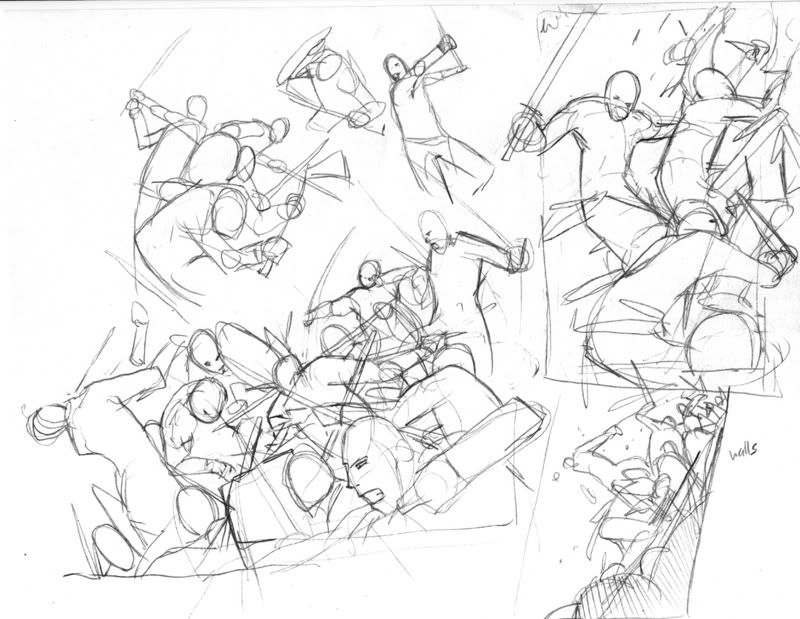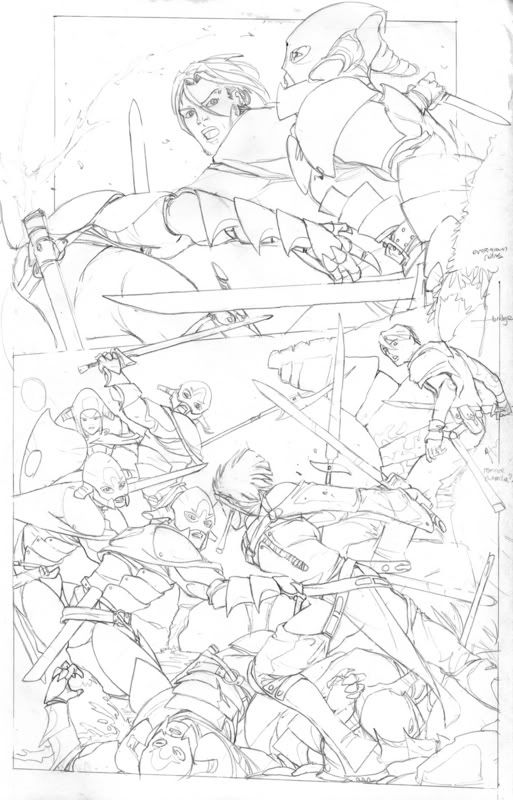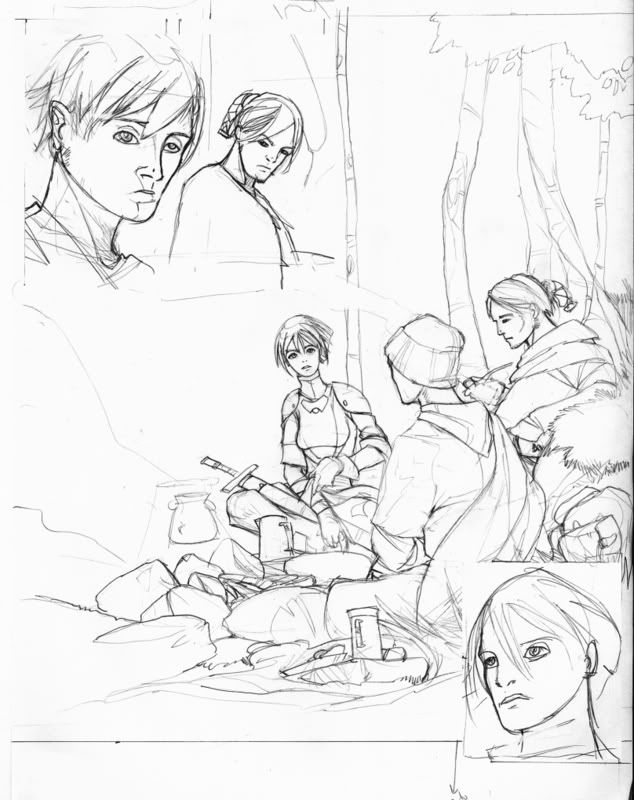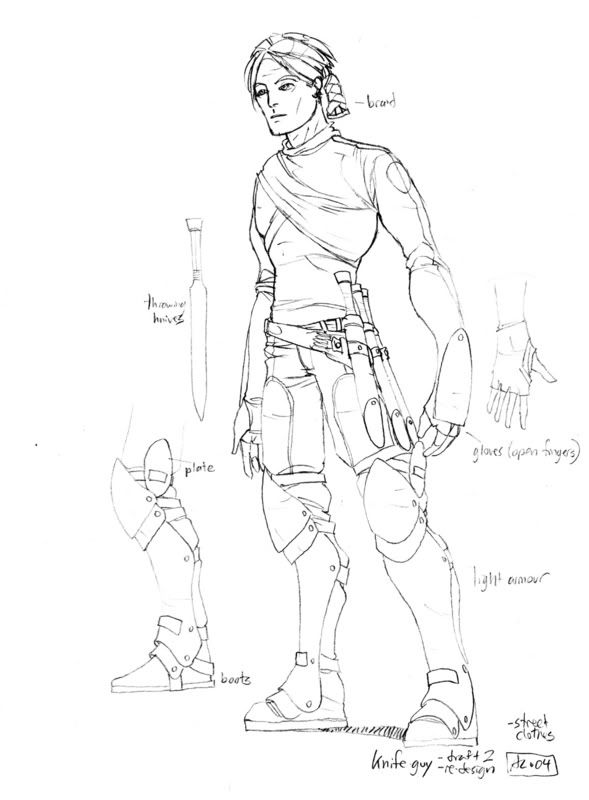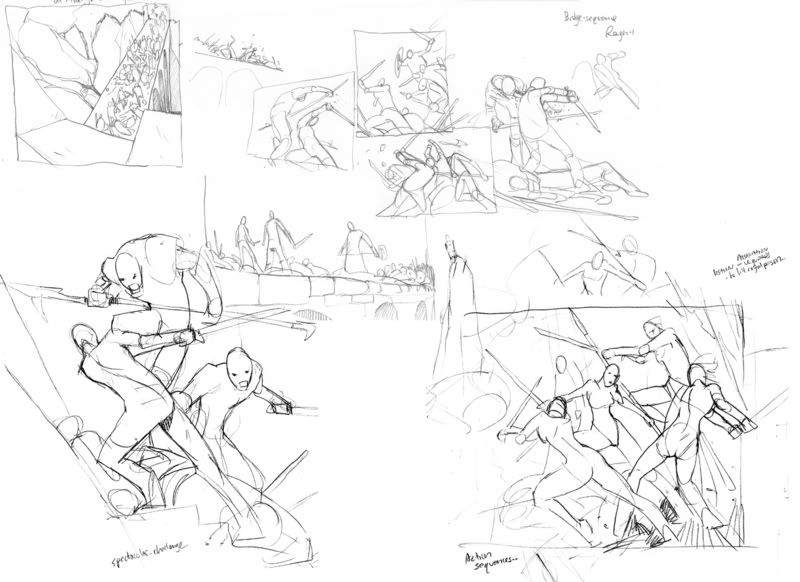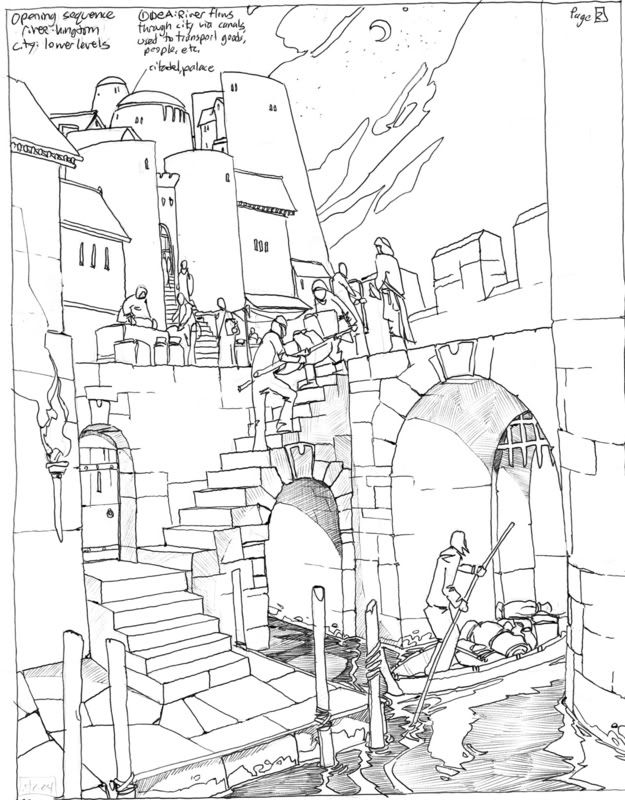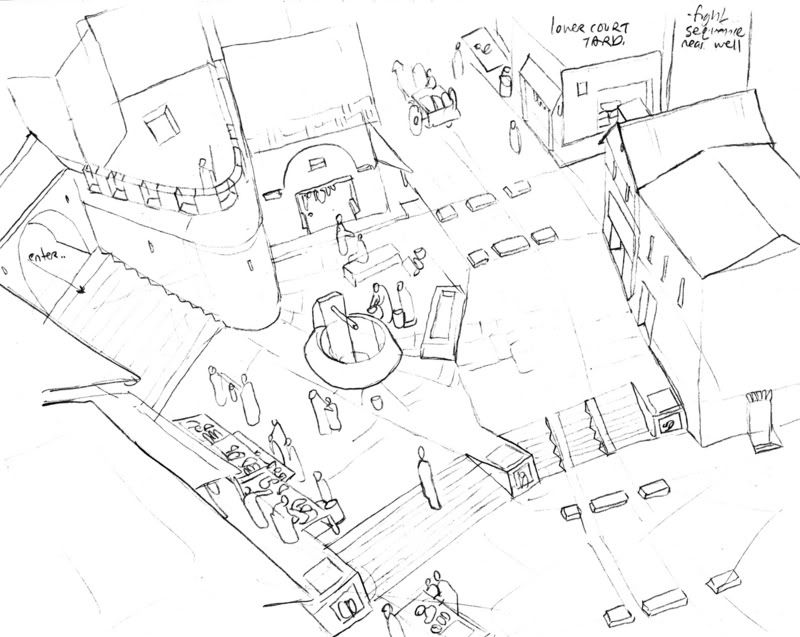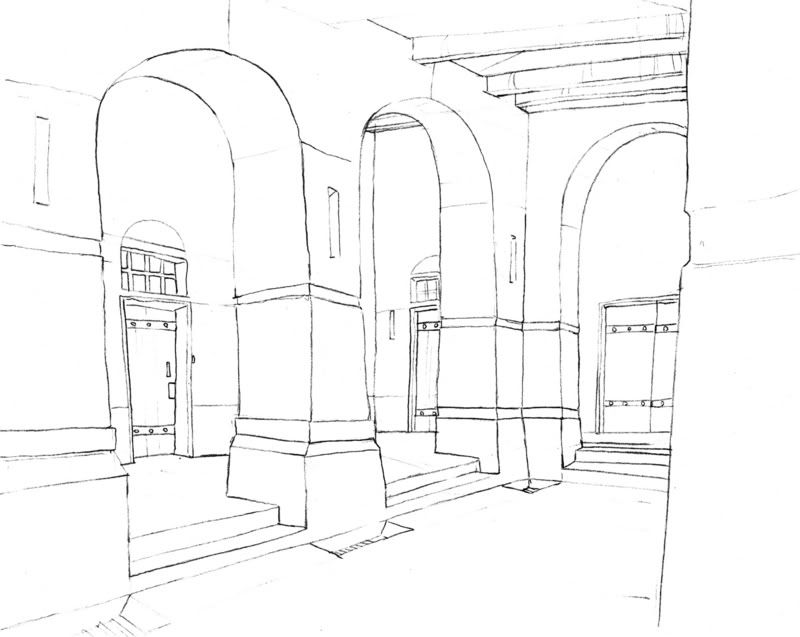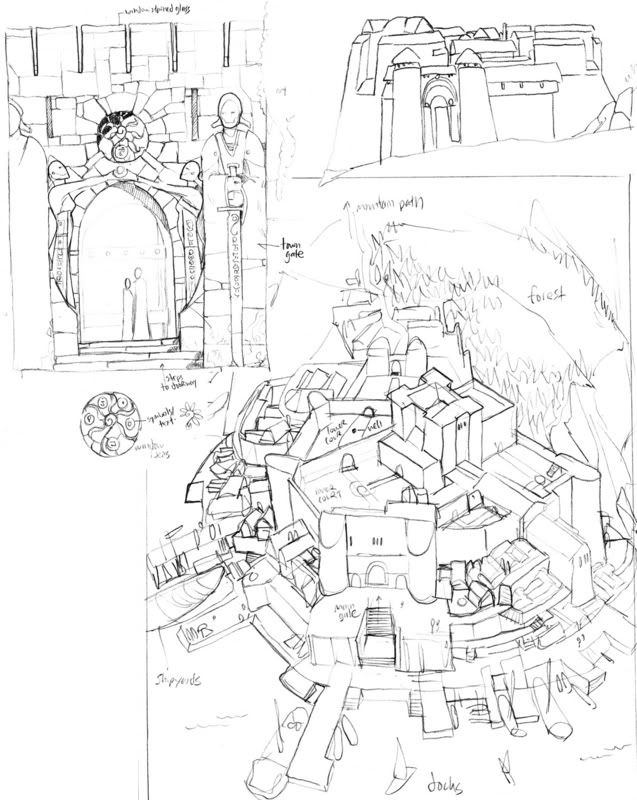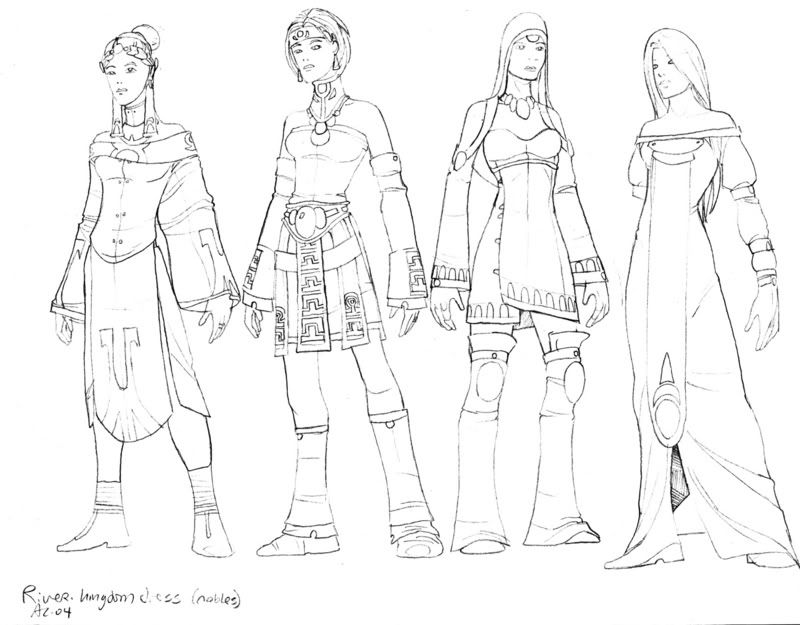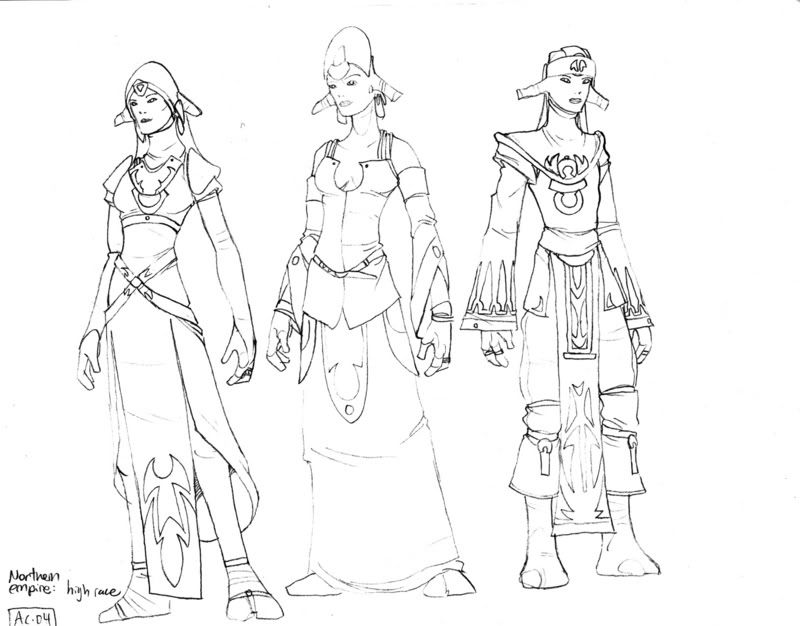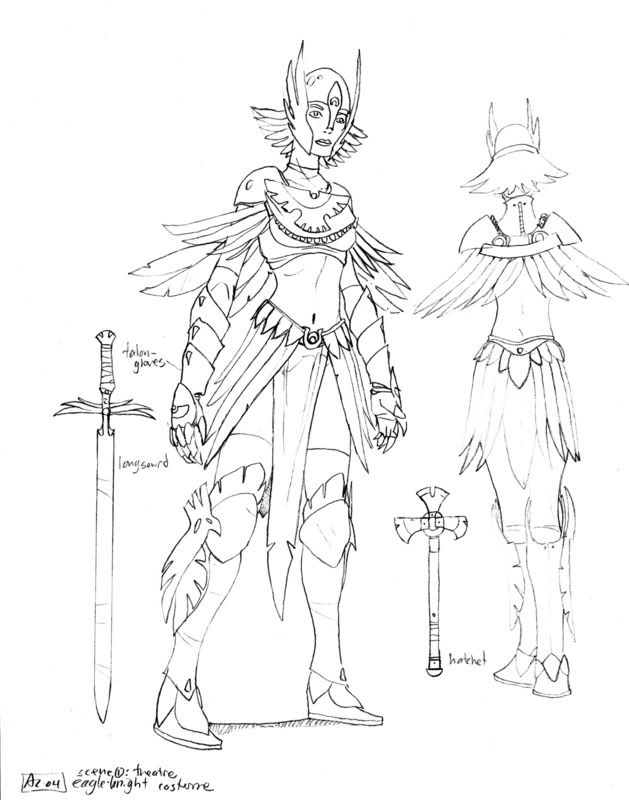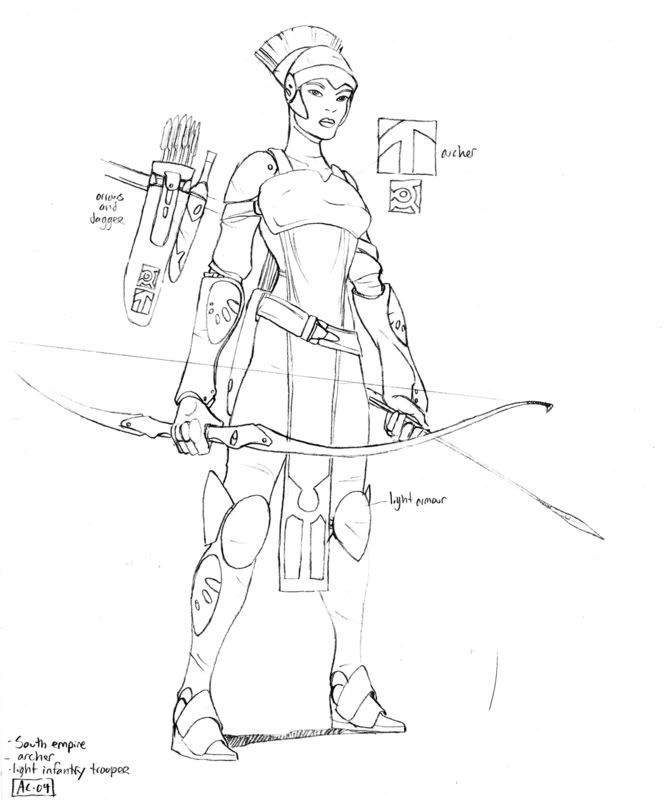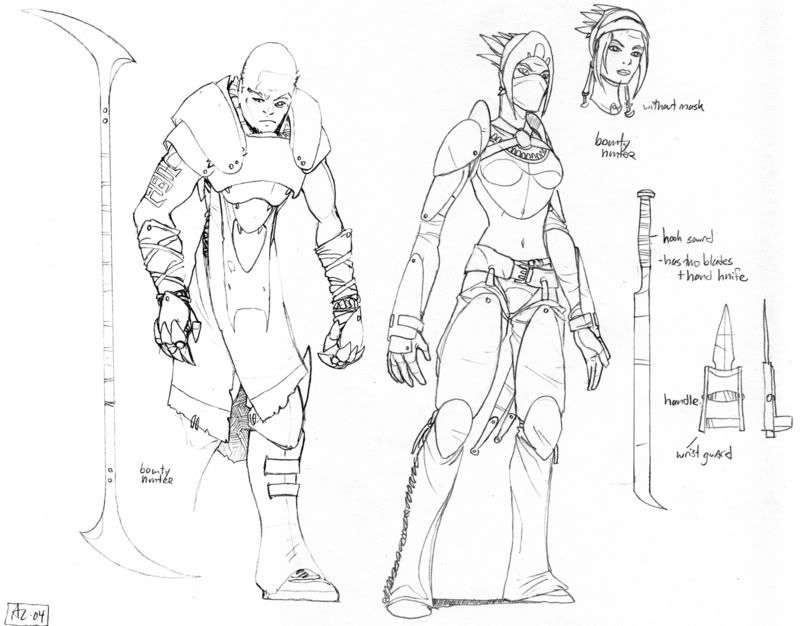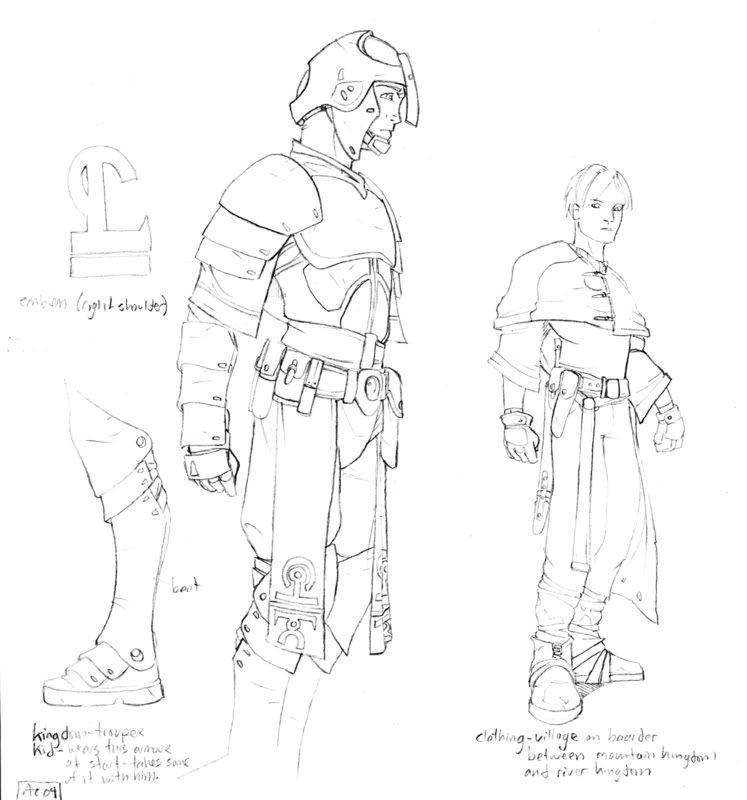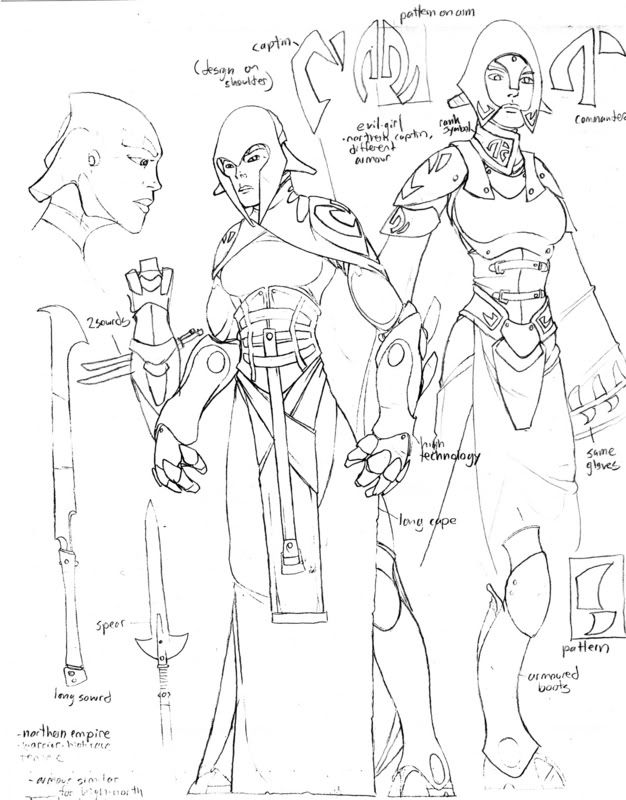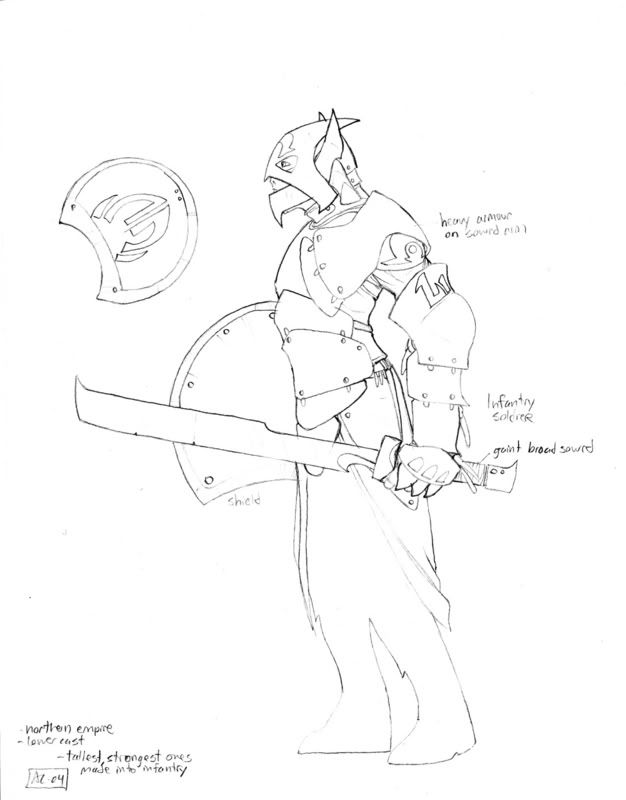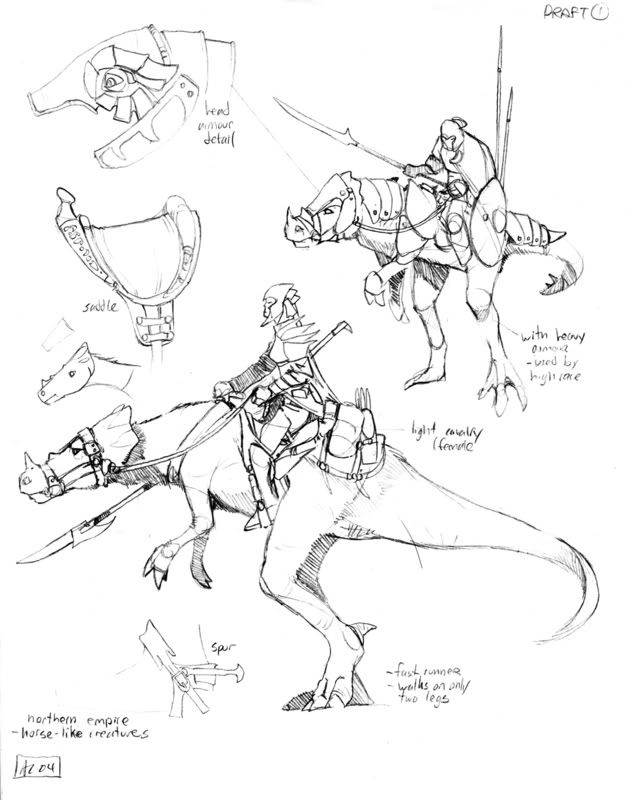
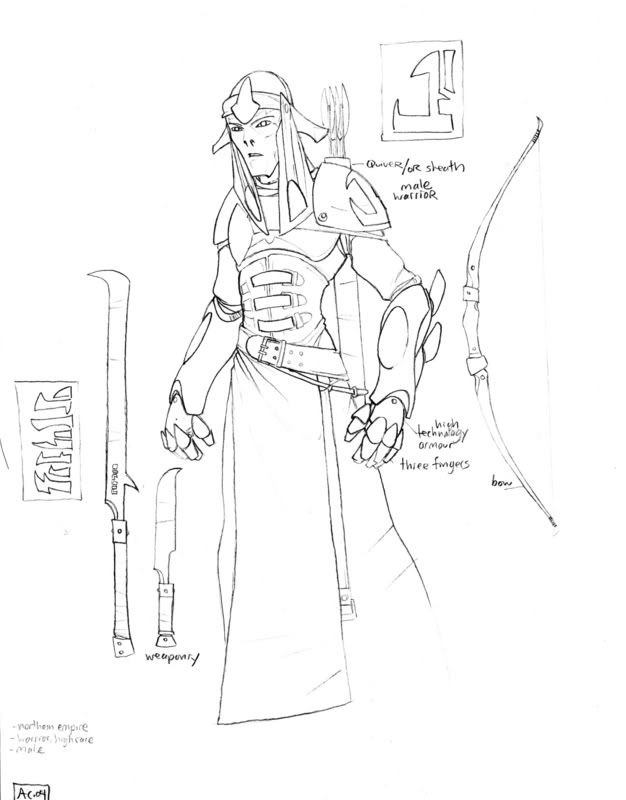
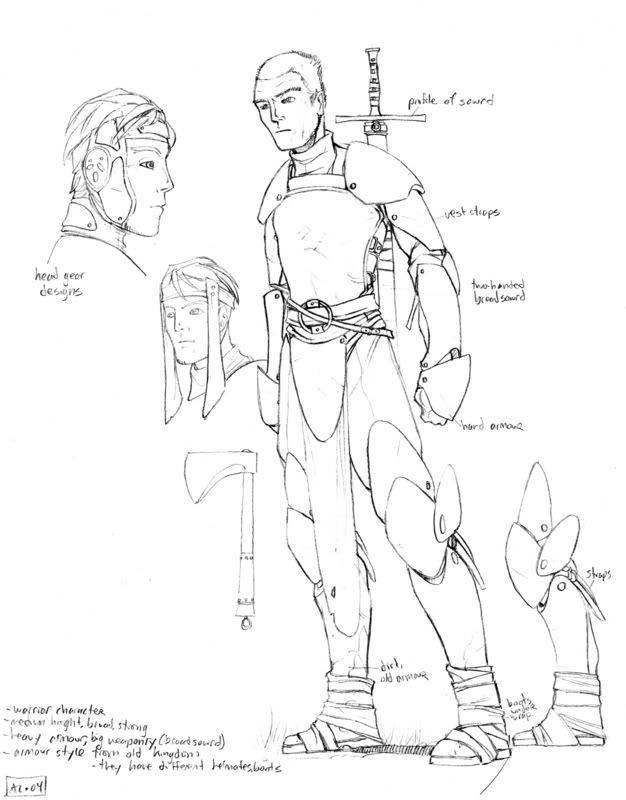
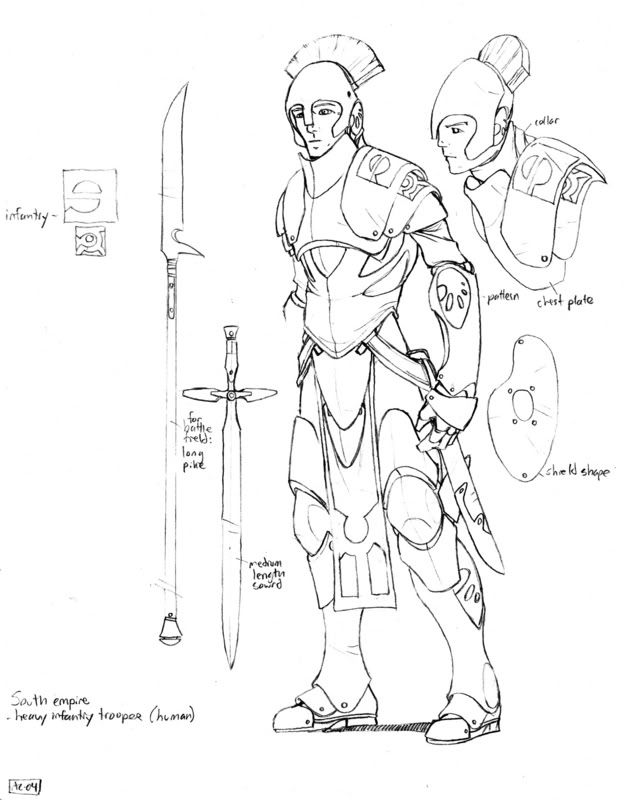
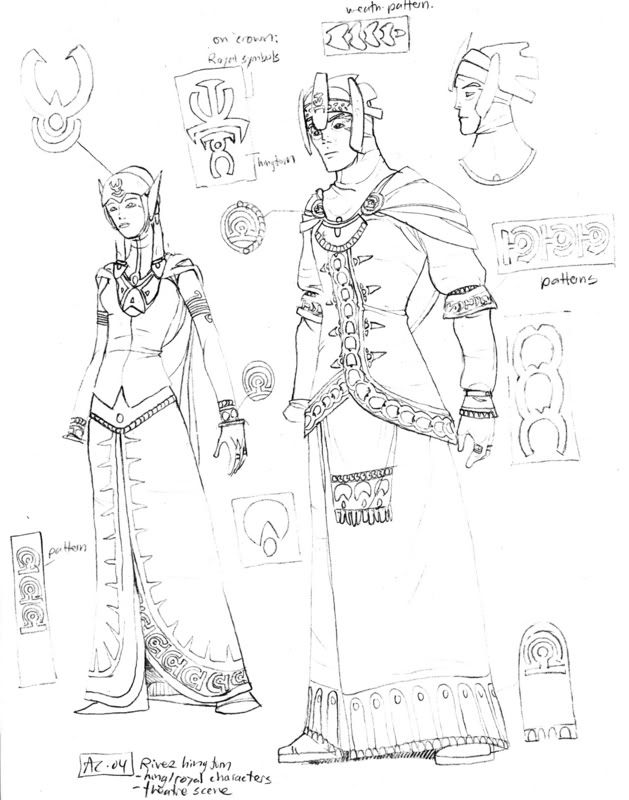
More sketches from the design stage of the comic. For me, this is the best part. I usually start by looking though national geographic or museum or collections for ancient artifacts. I look for interesting shapes and designs, and look at how certain aesthetics are common in various societies. When I design characters from a specific (and in this case, fictitious) culture I try and repeat graphic and stylistic elements. So, at a glance it is recognizable that they are of the same group. The style and symbols of a culture will depend on values and standing of the society (are they war-like or peaceful, wealthy or poor, isolated or cosmopolitan?) From there I can expand on the design, changing it to suit the individuals and their place in society. I try to reason out what design elements can I incorporate so that it becomes obvious that a character is, for example, a merchant or a soldier or a nobleman. Finally, I adjust the face and body to give the character a distinct and interesting look and personality. I didn’t really get to that stage on these sketches, as they are mostly concerned with costume designs.
